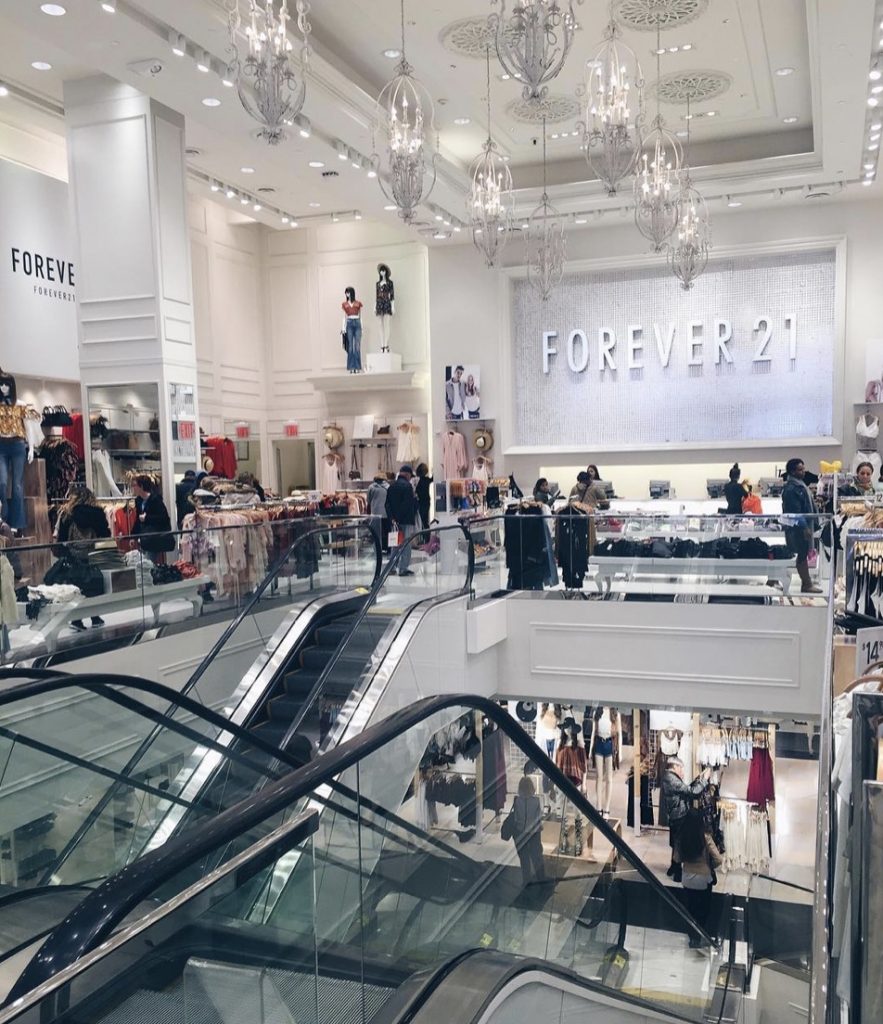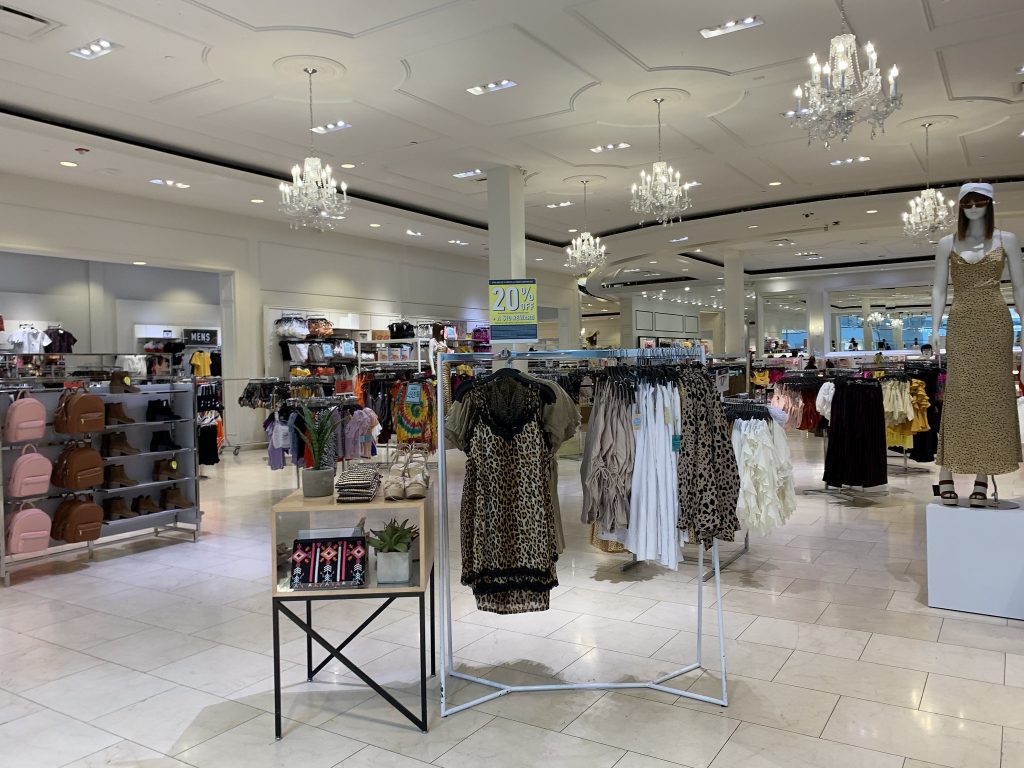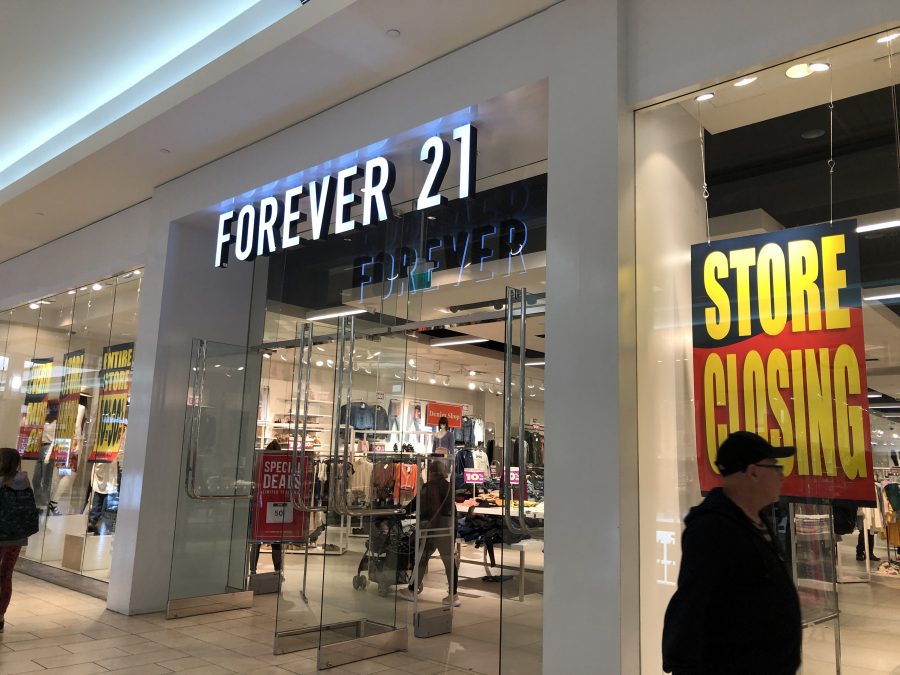You’ve probably noticed that a handful of Forever 21 stores have closed its trend-filled doors as of late (RIP to the beloved Yonge and Dundas location).
By now, it’s no secret that Forever 21 filed for Chapter 11 Bankruptcy Protection this past September, at the time announcing plans to close 350 stores worldwide.
As it turns out, not everyone wants to stay – and dress – 21 forever. The brands sales fell from $4.4 billion in 2016 to $3.3 billion in 2018.
So, what went wrong for Forever 21 in the near decade since the retailer famously opened a 90,000-square-foot flagship store in Times Square in 2010? Well, a few things.

The bankruptcy filing comes at a time when bricks and mortar stores are struggling to stay afloat and when fast fashion has become widely recognized as a major culprit for the environment. It’s not just the mass move away from fast fashion that can be blamed for the demise of Forever 21, however; in fact, that element is probably the least of the retailer’s concerns.
After all, other fast fashion giants are doing just fine in comparison, having adapted with things like sustainable collections. Such a move is as much of a business-savvy one than an ethical one: according to a recent ThredUp report, forty per cent of millennial shoppers plan to stop supporting fast fashion brands, compared to an average of 31 per cent.
Though Forever 21 has offered recycling programs, the brand has lagged behind its competitors in the sustainability department.

Some retail analysts also point to Forever 21’s quick expansion – one that saw the once penniless owners become quick billionaires – as the root of its demise. A focus on rapid growth meant other strategies, like the online world and a focus on localized markets, got less focus.
Not to mention, an expansion into children’s wear, maternity wear, and cosmetics strayed from its young, hip, 20-something shopper roots, making it more like a department store or Target than a specialized spot for those wanting to look the part.
In a tale as old as time, Forever 21 simply hasn’t kept up with the competition.
Forever 21 is no longer the “fastest” in the fast fashion game, thanks to ramped up efforts in the past decade from competitors like H&M and Zara, and the emergence of quick-producing, influencer-backed internet brands like Fashion Nova.

Instead of focusing on its online retail strategy – something that would have been smart given its millennial target market – Forever 21 kept opening up more (often massive) shiny new retail locations and expanding existing ones.
The retailer last opened a retail store as recently as 2016. While the brand maintains a solid online presence, it hasn’t been enough of one to account for the decline in foot traffic to its bricks and mortar locations. Many of which are complete with massive leases entered years ago that accompany the sprawling spaces.
Then there are all the many (pricey) legal woos…
The Forever 21 brand is a familiar one in courtrooms. In recent years, the retailer has been faced with a number of high-profile lawsuits, having been accused with everything from gender discrimination to knocking off other brand’s designs – many times.
Most recently, this past September, superstar Ariana Grande sued Forever 21 for a cool $10 million after a potential deal fell through. The claim states that the brand was unwilling to “pay the fair market value for a celebrity of Ms. Grande’s stature,” and instead “stole her name, likeness, and other intellectual property to promote their brands for free.” Yikes.
The Ariana Grande lawsuit comes after a slew of others, after individuals and retailers accused Forever 21 for copyright infringement.
Such sticky situations have involved both smaller designers and some of the most recognized brands in the world, like Gucci (over the use of its signature stripes), Adidas (over their own stripes), and Puma (who said Forever 21 copied three footwear designs from Rihanna’s collection with the athletic brand). It’s simply not a good look.
Perhaps things could have run smoother for Forever 21 had the brand had a proper team of seasoned executives in place.
As a recent New York Times article highlights, the Forever 21 founders, husband and wife team Do Won and Jin Sook Chang, kept business strictly insular and all-in-the-family, even when it reached massive success.

Without things like a Board of Directors to offer insight and accountability, the business began to unravel to the state it’s in today.
Before we anticipate kissing Forever 21 goodbye for good and growing up, however, it needs to be noted that the filing for bankruptcy doesn’t necessarily mean the end for a brand.
The reality is that bankruptcy can offer a solid opportunity for a company to re-evaluate and restructure. In fact, earlier this month, Forever 21 said it would actually keep more stores open than anticipated, after having negotiated $100 million in rent savings from landlords. The retailer also just released a capsule collection with Latin American music group CNCO and have big plans for Black Friday. So, there’s that.
Whether the drama-ridden brand can bounce back as easily as a 21-year-old can remains to be seen…but we will be watching with popcorn.
Articles You May Be Interested In:
10 Stores To Shop When Forever 21 Closes Its Doors For Good
Costco Just Became Canada’s Second Largest Retailer
The Running List Of Retail Store Closures And Bankruptcies In 2019
SaleSpy: Everything At The Forever 21 Store Closing Sale Is Now 30-60% Off
Why In The World Is Retail Struggling In Vancouver?
